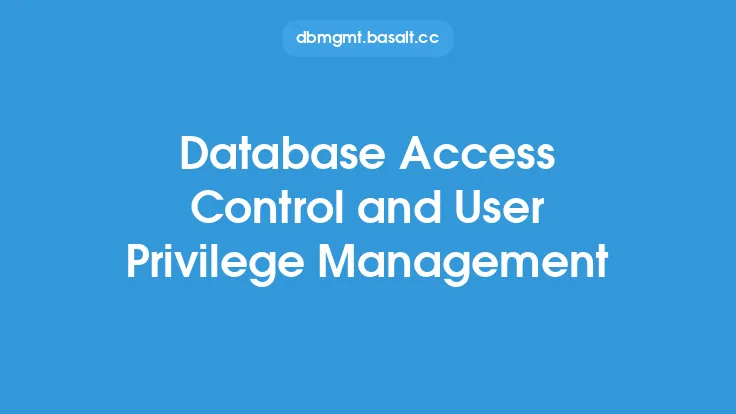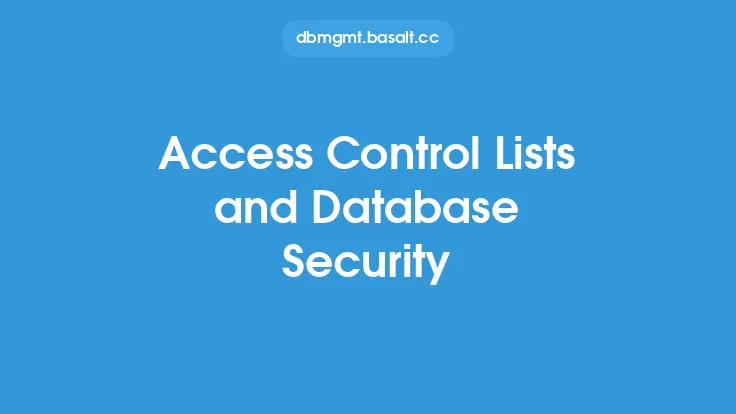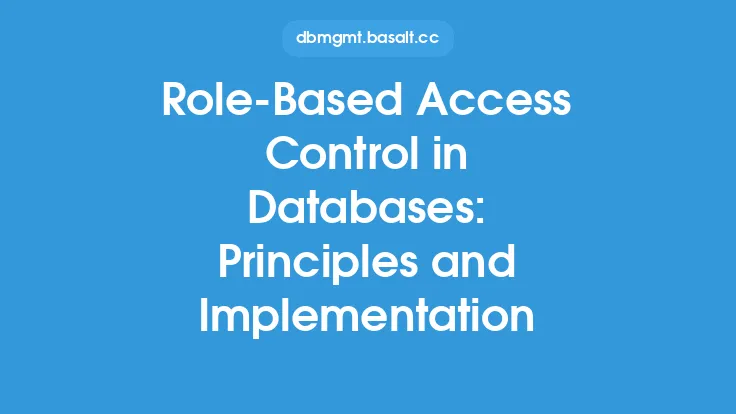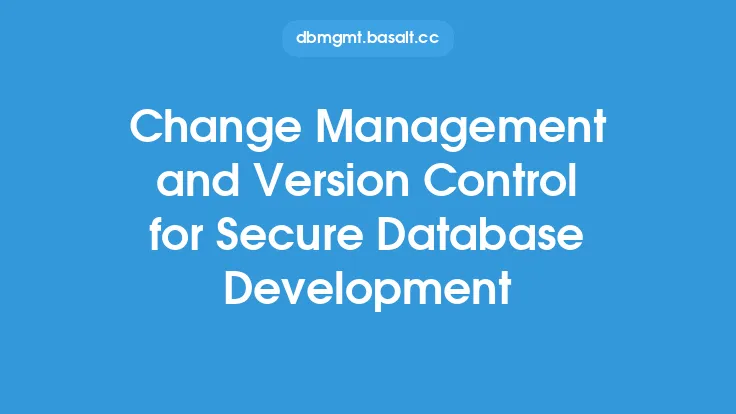Centralized access control and identity management are crucial components of database security, as they enable organizations to manage and regulate access to sensitive data stored in their databases. In today's complex and interconnected IT environments, it is essential to have a centralized system that can efficiently manage access to databases, ensuring that only authorized users can access, modify, or delete data. This article will delve into the concepts, benefits, and best practices of centralized access control and identity management for databases.
Introduction to Centralized Access Control
Centralized access control refers to the process of managing and controlling access to databases from a single, centralized location. This approach enables organizations to streamline access management, reduce administrative burdens, and improve security posture. With centralized access control, database administrators can create, manage, and enforce access policies, ensuring that users have the necessary permissions to perform their jobs without compromising data security. Centralized access control systems typically include features such as user authentication, authorization, and auditing, which provide a comprehensive view of database access and usage.
Benefits of Centralized Access Control
The benefits of centralized access control are numerous and significant. One of the primary advantages is improved security, as it enables organizations to enforce consistent access policies across all databases, reducing the risk of unauthorized access or data breaches. Centralized access control also simplifies access management, as administrators can manage access to multiple databases from a single location, reducing administrative burdens and minimizing the risk of errors. Additionally, centralized access control provides real-time monitoring and auditing capabilities, enabling organizations to detect and respond to security incidents quickly and effectively.
Identity Management in Database Security
Identity management is a critical component of centralized access control, as it enables organizations to manage and verify user identities across multiple databases. Identity management systems typically include features such as user provisioning, password management, and authentication, which ensure that only authorized users can access databases. Effective identity management is essential in preventing identity-based attacks, such as phishing and impersonation, which can compromise database security. By implementing robust identity management practices, organizations can ensure that user identities are accurate, up-to-date, and secure, reducing the risk of unauthorized access to databases.
Best Practices for Centralized Access Control and Identity Management
To implement effective centralized access control and identity management, organizations should follow best practices such as:
- Implementing a centralized access control system that can manage access to multiple databases
- Enforcing strong authentication and authorization policies
- Using role-based access control to simplify access management
- Implementing real-time monitoring and auditing capabilities
- Conducting regular access reviews and audits to ensure compliance with security policies
- Providing training and awareness programs for users and administrators
- Continuously monitoring and updating access control and identity management systems to ensure they remain effective and secure.
Challenges and Limitations of Centralized Access Control
While centralized access control and identity management offer numerous benefits, there are also challenges and limitations to consider. One of the primary challenges is the complexity of implementing and managing centralized access control systems, which can require significant resources and expertise. Additionally, centralized access control systems can be vulnerable to single points of failure, which can compromise database security if not properly addressed. Furthermore, centralized access control systems may not be compatible with all database management systems, which can limit their effectiveness.
Future of Centralized Access Control and Identity Management
The future of centralized access control and identity management is likely to be shaped by emerging trends and technologies, such as cloud computing, artificial intelligence, and machine learning. As organizations increasingly adopt cloud-based databases, centralized access control and identity management systems will need to evolve to accommodate these new environments. Additionally, the use of artificial intelligence and machine learning can enhance centralized access control and identity management by providing real-time threat detection and predictive analytics. By staying ahead of these trends and technologies, organizations can ensure that their centralized access control and identity management systems remain effective and secure.
Conclusion
In conclusion, centralized access control and identity management are essential components of database security, enabling organizations to manage and regulate access to sensitive data stored in their databases. By implementing centralized access control and identity management systems, organizations can improve security, simplify access management, and reduce administrative burdens. While there are challenges and limitations to consider, the benefits of centralized access control and identity management make them a critical investment for any organization seeking to protect its databases and ensure the security and integrity of its data. By following best practices and staying ahead of emerging trends and technologies, organizations can ensure that their centralized access control and identity management systems remain effective and secure, providing a robust foundation for database security.





